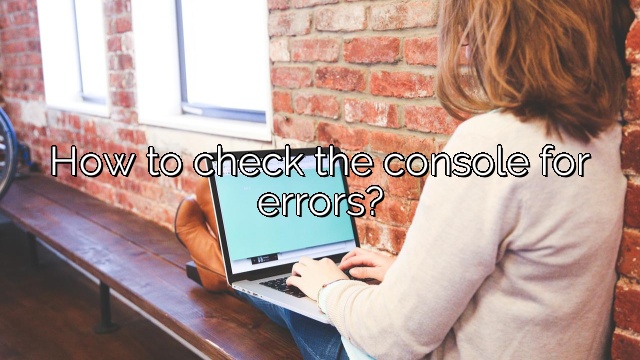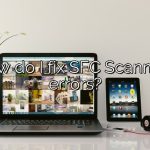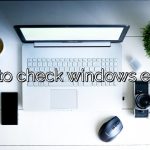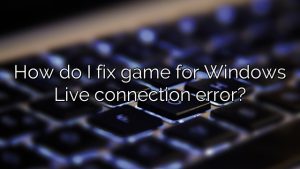
How to check the console for errors?
Click Start.
In the search bar, type CMD .
Right-click CMD.exe and select Run as Administrator.
On the User Account Control (UAC) prompt, click Yes.
In the command prompt window, type SFC /scannow and press Enter .
System file checker utility checks the integrity of Windows system files and repairs them if required.
Step 1: Launch Command Prompt as administrator.
Click the search icon on the taskbar and type cmd into the search bar.
Step 2: Once Command Prompt launches, type the command chkdsk
: (
refers to the drive letter of the drive to be
Step 3: Check the test result.
Should I run DISM or SFC first?
SFC analyzes the authenticity of all protected operating files, including those that are not on the hard drive. It should normally be run before DISM.
What does SFC Scannow fix?
System File Checker is a utility built into the operating system that checks system files for potential corruption. The sfc /scannow (System File Checker) command scans the integrity of all protected operating system files and replaces completely damaged, modified, or corrupted versions with correct versions whenever possible.
How do I run SFC and DISM?
Open Start. Find Command Prompt, right-click on the first result, and select the personal option “Run as administrator”. To run an advanced DISM scan, type the following command and simply press Enter: DISM /Online /Cleanup-Image /ScanHealth.
What is the difference between chkdsk and SFC?
SFC Scannow checks and repairs corrupted network files while CHKDSK checks and fixes file system errors and definitely checks for bad sectors on the physical hard drive.
How to check your computer for errors?
Bugs: This part shows all issues related to performance diagnostics.
Warning. This subsection will show memory-related diagnostic issues and provide specific solutions to resolve the issue.
Informational: This subsection typically displays the results of the associated disk diagnostics.
More articles
How do I Check my System for errors?
Open “This PC” in “File” -> “Explorer”, right click on the hard drive/SSD you want to capture -> select “Properties”.
In the Tools section, click on the eye -> click on the Check button under Error Checking.
You will then probably scan the drive in question or repair the drive if you find any errors.
How to check the console for errors?
# View messages logged using JavaScript. In the demo, click the “Log Info” button.
Then make sure Hello, Console!
Return to the main console page by pointing to the following workflows: Click the Console tab.
In the demo, click on the Log Warning Key.
Optional: Click log.js:12 to see the code that formats the message this way, then return when you’re done.
More equipment
How to check USB drive for errors?
Procedure for checking the physical weight loss of a Linux USB key: In the terminal application, open .your
Insert your flash drive or flash drive into your Linux system.
To test and detect Bad Arena on a USB flash drive or inkjet drive, run: badblocks -w -o -ersus error.log /dev/sdX
To check for errors on an expensive USB drive, you can use your f3write and f3read commands, which are an alternative to the h2testw application in the hands of Windows operating systems.
How errors are detected using parity checking what are the limitations of parity checking?
The main disadvantages of using bits are twofold: Equal There are N additional bits in each word to be transmitted. Parity check cannot detect all forms, which are most commonly associated with errors.

Charles Howell is a freelance writer and editor. He has been writing about consumer electronics, how-to guides, and the latest news in the tech world for over 10 years. His work has been featured on a variety of websites, including techcrunch.com, where he is a contributor. When he’s not writing or spending time with his family, he enjoys playing tennis and exploring new restaurants in the area.










